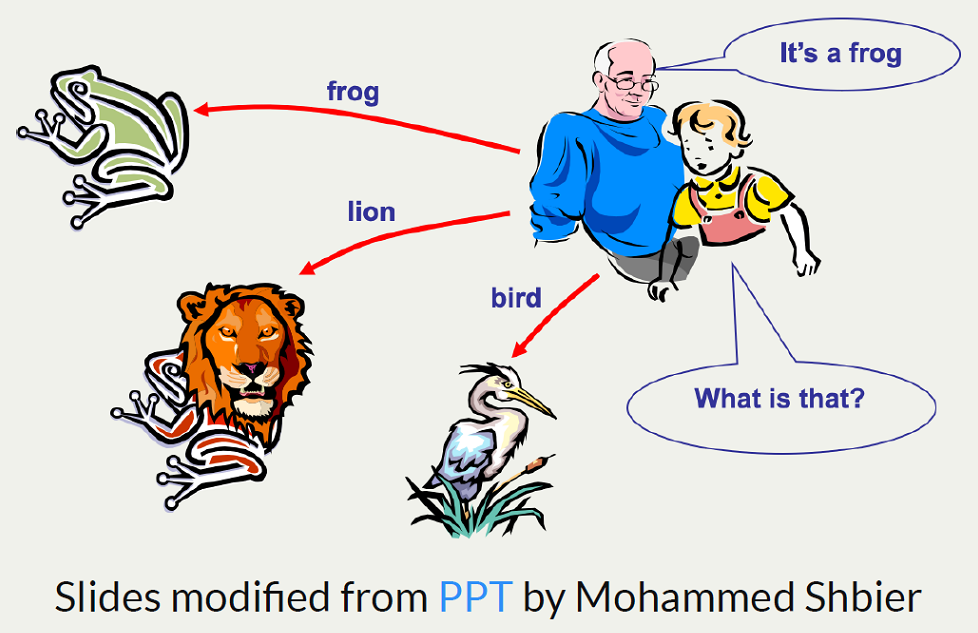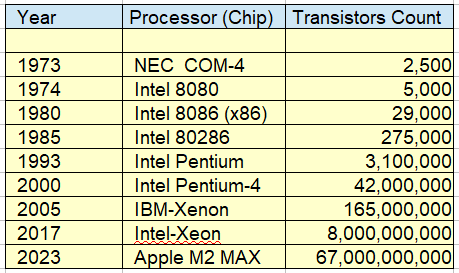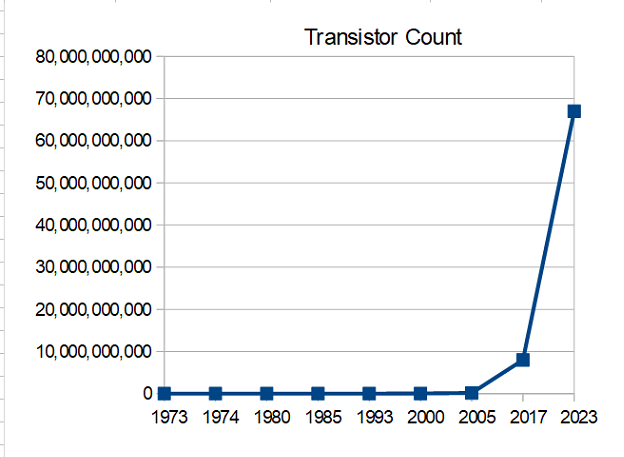|
Artificial Intelligence (AI) is a field of computer science
that consists of algorithms, mathematical and statistical models, programming
languages, that aims to mimick human intelligence. Further AI is
implemented using cognitive analytics and computing, machine learning, machine
vision, along with hardware to enable computers, robots and other systems to
operate in an autonomous mode. Humans and animals using natural intelligence
can independently react to any situation and take necessary action to
progress forward to get preferred outcomes.
|
| |
|
Human Intelligence (natural intelligence)
|
|
A baby after birth initially cries when the baby is hungry, has some
discomfort or needs new diapers and so on. Day by day the baby starts
to recognize who the parents
are, initially by how they are held and carried around -
tactile comprehension,
later on by vision -
facial/pattern recognition. The baby
tries to mimic the parents voice by different types of noise and sound
- audio/voice comprehension,
until it can master to communicate meaningful words/sentenses. Since
humans eat and
can react to adverse conditions (foul smell), other
sensory intelligence is acquired by retaining how things smell.
At each level, the newly acquired intelligence gets permanentaly stored
in the
human brain (human learning). This
results in humans taking logical and intelligent actions to one's best
ability for day to day activities. There
has been a lot of research to understand how the human brain works. There
has been analysis of the brain of the well known genius scientist such
as Albert Einstein to understand differences in brain of a normal person
and a genius.
|
| |

|
| |
|
In 1950's, Alan Turing, a British computer scientist wrote about machines
(computers) that could think. He is considered as
father of Artificial Intelligence.
From then on, there has been research to create machines that can think
independently by many research organizations such as
DARPA
and universities around the world. Another famous US computer
scientist, considered as
founder of AI, John McCarthy named the area
of thinking machines as "Artificial intelligence".
|
| |
|
During graduate research on
robotic dexterous hand
several years ago, I
encountered this issue when simulating grasping objects such
as a ball by the dexterous hand using software. The software
simulation of mechanical grasping of was a success. The
dexterous hand was taught (in
machine learning
terms it is similar to
supervised learning
)
to grab hard balls such as a baseball. The software simulation was
mechanically tested using a industrial
robotic gripper with three fingers.
|
| |
|
The big challenge encountered was when
suddenly the object to grasp was switched from baseball to
an egg or a ping-pong ball in a demo robot with same robotic
gripper with fingers. Without AI (intelligent decision
making algorithms) and also due to lack of visual feedback
to the robotic gripper, the egg would get squashed. For
the dexterous hand or robotic gripper to seamlessly
hold objects autonomously without causing damage,
requires AI, machine learning algorithms, software and
hardware embedded with machine vision.
|
| |
|
An animal running in a certain terrain in a forest will react to jump over
an obstacle or turn away using its natural intelligence spontaneously. The
AI provides the tools and technology for a machine to achieve
or mimick such intelligence. Using AI, for a machine to perform such
maneuvers operating autonomously, has to
|
| |
|
1. Compute the speed
|
|
2. Constantly make adjustments to speed based on distance
|
|
3. Avoid obstacles using vision (camera, hardware and software)
|
|
4. Constantly adjust mechanical devices that perform functions of legs or
motion systems based terrain
|
|
5. Think and make spontaneous decisions using built-in AI
|
| |
|
to slow down, or maintain speed, or change path, or stop or jump over
an obstacle. At a high level, this lists the complexity involved
(intelligence, cognitive analytics) that needs to be incorporated
into a robot. The system also has to learn from new situations it
encounters on a constant basis.
|
| |

|
| |
|
From 1980's to now there has been
enormous progress in the computational power due to advancements in
memory chip architecture
(CPU,
VLSI,
ULSI, etc.)
and technology, which is making AI a
reality in the recent years. The table shows how the number of
transistors started from 2500 in a chip in the 1970s to
67 billion transistors in a single chip in 2023. The IBM's deep
blue supercomputer
was able to achieve the level of intelligence to defeat world chess
champion Gary Kasparov in a couple of games in a tournament. Autonomous
computers and machines continue to evolve with enhancements in AI.
As the computing power and other technologies increases, the
evolution of AI will be exponential in the future.
|
| |

|
| |
|
One of the CEO of a AI research company was expressing how
venture capital companies were ignoring funding of
AI and ML in 2010 and around. Going back further to
1990s, AI was considered as a fantasy and recruiters would
advice prospective clients to remove AI from the
resumes, whom they were promoting for job placement in
client companies. The above graph can be a good reason that
the computing power has made AI and ML a thing of the
present day.
|
| |
|
The research that came out of AI and robotics in early
years, was used
in other technologies in stages. Good examples are
machine vision (computer vision) in medical diagnosis,
optimal path between two points - shortest path
algorithms, obstacle avoidance, to name a few.
|
|
Some of the top programming languages used in AI are Python,
Prolog,
Java, C++ and
LISP.
In 1980's there was research about
expert systems, that
would one day be able solve most of human challenges. Now
we have the
ChatGPT
and other AI based tools that use
NLP
and
LLM
algorithms that synthesize the user input, provide
accurate answers, solutions and are
well on the way of achieving highest level of
Artificial Intelligence.
|
| |
|
Weak AI
|
|
Implementing of machine intelligence has been there for
quite some time. Most automobiles have intelligence such
as emergency stopping when a vehicle in front makes a
stop or reduces speed, speen adjustment in adaptive
cruise control, again monitoring the car in front by
use of intelligent sensors,
radar,
hardware and software. There
are the automonous vehicles that drive on their own. Those
that operate with some human interaction are typically
weak or basic AI.
Many IoT
devices, traffic signals and many more, are examples of
embedded devices with intelligence.
|
| |
|
Strong AI
|
|
Those machines that operate in autonomous mode -
"think on their own and take corrective actions without
human intervention" can be considered as
strong or advanced AI.
Further there are autonomous robots,
AGV
that operate
independently without human interaction, avoid
obstacles, plan the best route between a set of points,
make independent decisions, essentially use artifical
intelligence to the highest level and can be
considered as state of the art. There will be a day when
an autonomous robot will evaluate battery life and
replace battery in a safe mode on its own when the battery
life is reaching or below a certain value - say 15%.
|
| |
|
What is Not AI
|
|
Too many application are loosely tagging automatic emails
as "AI-Message" etc. Majority of them are
fixed or pre-designated
application workflow management or automation. There
is no thinking or intelligent assessment aspect. A
good example is, if the we search a court document for
a specific string such as
money laundering,
it just highlights the location of
the string in the document - a standard word
prcessor feature, which has been present in
word processors since the earliest versions.
|
| |
|
Enabling AI
|
|
The above analysis becomes AI enabled, if it can
assess what is searched and provide intelligent
assessment such as what types of crimes were
committed and what it is questionable or can be
excluded - simplify a lawyer's job by use of LLM.
The speed of processing is enhanced, errors,
wrong assessment can avoided or minimized.
|
|
Aerospace
|
|
Air Traffic control, intelligent traffic
management based on
weather/traffic conditions
|
| |
|
Automotive and Related Applications
|
|
Autonomous/driverless vehicles, intelligent traffic and signal
management, autonomous highway speed management based on
weather/traffic conditions
|
| |
|
Finance Applications
|
|
Fraud detection, mortgage data analysis, loan processing,
stock/trade automation, crypto-currency, fintech and so on.
|
| |
|
IT Applications
|
|
Software development, system management, data management,
autonomous process management, cyber security, network
management
|
| |
|
Medical Science
|
|
Perform surgery in an autonomous manner,
with minimum human intervention, basic diagnosis of a person's
health and total automated interaction with all health management
systems, drug development
|
| |
|
Robotics
|
|
Autonomous operations in manufacturing systems, humanoid robots
|


